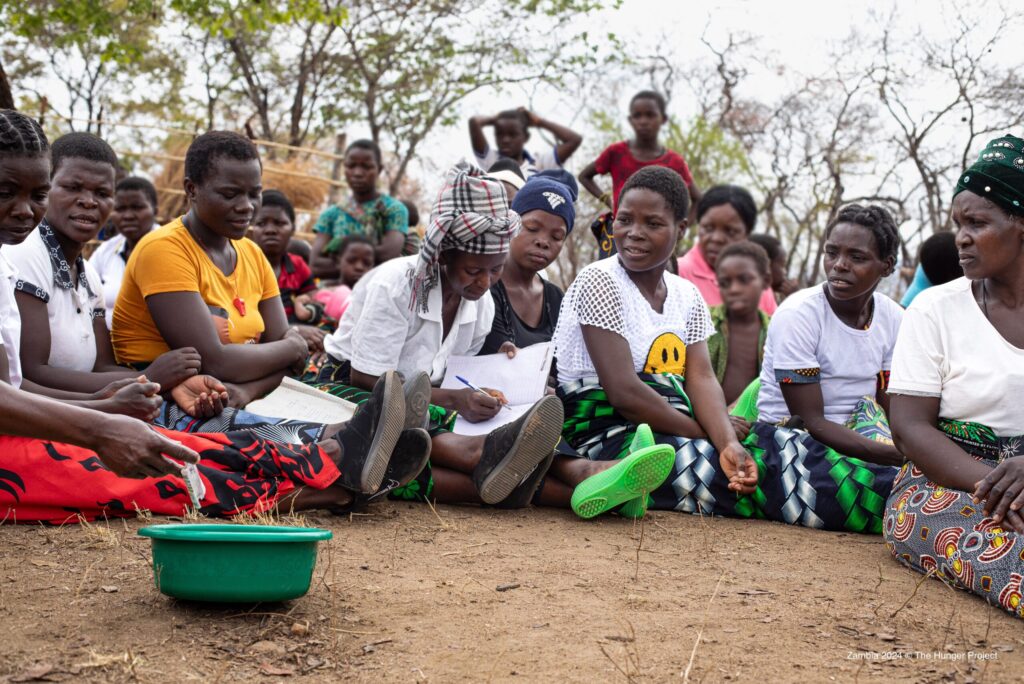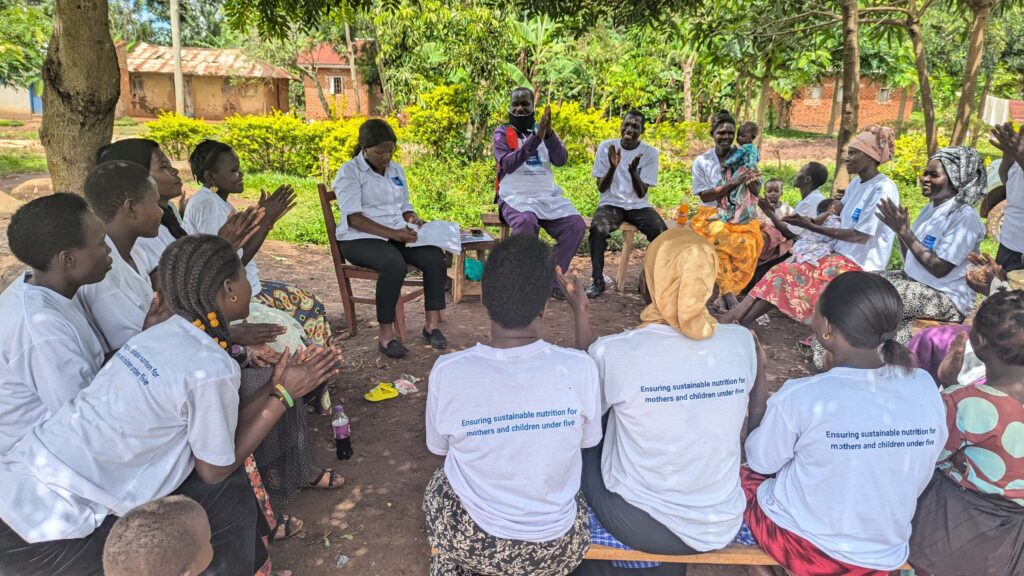For the first time since 2017, the United Nations’ 2025 State of Food Security and Nutrition in the World (SOFI) Report reveals a decline in the number of people living with chronic hunger. Yet, the urgency of this moment cannot be overstated. An estimated 673 million people, or 1 in 12 globally, still face chronic hunger today. And while progress is being made, it is fragile and uneven.
After years of stagnation, the tide is finally turning: chronic hunger is beginning to decline. This is a hard-won sign of hope. Yet with 673 million people still living with hunger, our work is far from over. We face a defining choice: retreat from progress or rise to meet the moment. Now is the time to rally behind a vision where those most affected by hunger are not seen as recipients of aid, but as leaders of their own transformation.
Rowlands Kaotcha, President & CEO of The Hunger Project
Key Findings from the 2025 SOFI Report
Bright spots:
- Chronic hunger declined globally: In 2024, 8.2% of the population, or 673 million people, lived with chronic hunger.
- More children are well nourished: Child stunting rates dropped from 26.4% in 2012 to 23.2% in 2024. Exclusive breastfeeding increased from 37% in 2012 to 47.8% in 2023.
- Globally more people can afford a healthy diet despite high food price inflation: Over 68% of the global population can afford a healthy diet.
Areas of Concern:
- Progress has been inequitable: While other regions have seen a decline in chronic hunger, the number of people living with chronic hunger in Africa and Western Asia has increased.
- The gender gap has widened, again: The prevalence of food insecurity is consistently higher among women than among men, globally and in all regions.
- Many women and children are lacking dietary diversity: Two-thirds of children aged 6 months to 2 years and one-third of women aged 15 to 49 do not consume a diverse enough diet to get adequate nutrition.
- We must accelerate action to reach the Sustainable Development Goals by 2030: 512 million people are projected to be chronically undernourished by 2030—60% of whom will live in Africa.

Food Price Inflation: A Driving Force Behind Hunger
The 2025 SOFI Report identifies food price inflation as one of the most persistent drivers of hunger worldwide. Although some countries are recovering economically post-pandemic, this recovery has been highly unequal, particularly in low-income countries, where food costs continue to outpace income growth.
In these contexts, households often spend a large portion of their income on food. When prices rise, there is little to no buffer, families are forced to make impossible choices between food, healthcare, and education.
In many rural communities, food price inflation, peaking at 30% in 2023, has significantly reduced household purchasing power. Smallholder farmers, often net buyers of food themselves, face higher input costs while still struggling to access nutritious options. As a result, inflation deepens existing inequalities and disproportionately affects women and children, who are typically last to eat and first to suffer in times of scarcity.
“In Uganda, families are grappling with rising food prices and struggling to put enough food on the table. Now more than ever, we need sustained, targeted responses rooted in local leadership. That’s where The Hunger Project comes in.”
Irene Naikaali, Country Leader, The Hunger Project–Uganda

Our Approach: Rooted in Resilience
The SOFI 2025 Report reinforces what The Hunger Project sees on the ground every day: that hunger is driven and sustained by systemic inequities. Tackling hunger at its roots means investing in community-led, gender-equitable solutions that build resilience and long-term change.
In partnership with communities, we:
- Strengthen local food systems: Supporting the development of home gardens and community agriculture reduces dependence on volatile food markets.
- Diversify livelihoods: Through our programmes, women and young people gain the skills and confidence to create multiple sources of income, increasing their resilience to economic shocks.
- Improve access to nutrition: Community leaders are equipped to deliver education on balanced diets and provide access to supplements for women and children where needed.
- Promote community leadership: We build the capacity of local leaders to advocate for sustainable, culturally relevant solutions rooted in dignity and self-reliance.
A Pivotal Moment for Global Solidarity
The 2025 SOFI report holds promising signs of a world without hunger. We must not allow this progress to stall. Governments around the world are shrinking their global development funding at a time when bold investment is needed most. As a global community, we are being called to redefine what it means to support human dignity and shared progress. This is a moment of both hope and responsibility—an invitation to build on momentum, center community leadership and create a future where no one has to live with hunger.
The 2025 State of Food Security and Nutrition in the World Report was published on July 28, 2025 jointly by the Food and Agriculture Organisation of the United Nations (FAO), the International Fund for Agricultural Development (IFAD), the United Nations Children’s Fund (UNICEF), the World Food Programme (WFP) and the World Health Organisation (WHO).
[Image credits: Malawi 2022; Zambia 2024; Uganda 2024 for The Hunger Project]
If you’d like to contribute to our mission, donate now.
